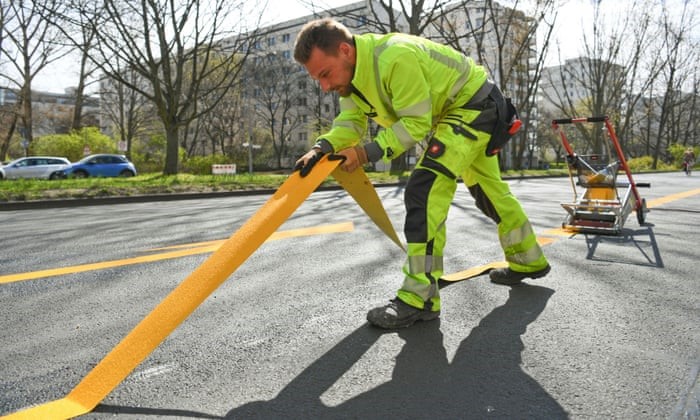What has happened around the world?
From Bogota to Milan, and Winnipeg to Brighton; all around the world, countries have responded to the continuing Covid-19 pandemic through the installation of temporary infrastructure measures in order to promote effective physical distancing and protect public health.

In Paris, ‘Corona Cycleways’ link up the city for active travel in order to help facilitate safer travel while also safeguarding against severe congestion as people become more wary use public transport.
Aukland, meanwhile, has removed parking spaces in order to extend the footways of busy streets, utilising basic materials such as planter boxes and colourful paint.
Regardless of geographical location and the measures being adopted, however, once thing is clear – people everywhere are reevaluating how we use shared spaces and the ways we move within them.
How can we learn from this?
In this knowledge sharing session, Infrastructure Officers for Sustrans Sam Valentine, Daniel Jeffs and Poppea Daniel discuss the transformative temporary infrastructure changes taking place outside of Scotland in a bid to inspire Scottish local authorities implementing their own.
Across the various case studies presented, three types of temporary measures are discussed:
- Pavement widening
- Temporary Cycle lanes
- Open Streets
To learn more about what is happening elsewhere in the world to promote safe walking and cycling during the Covid-19 pandemic, click here.
Note: the examples shown are in no way prescriptive and are for information only. Where specific products are shown in this document, this does not constitute Sustrans’ endorsement of that product. This webinar was recorded early June, and was up to date at the time of recording.